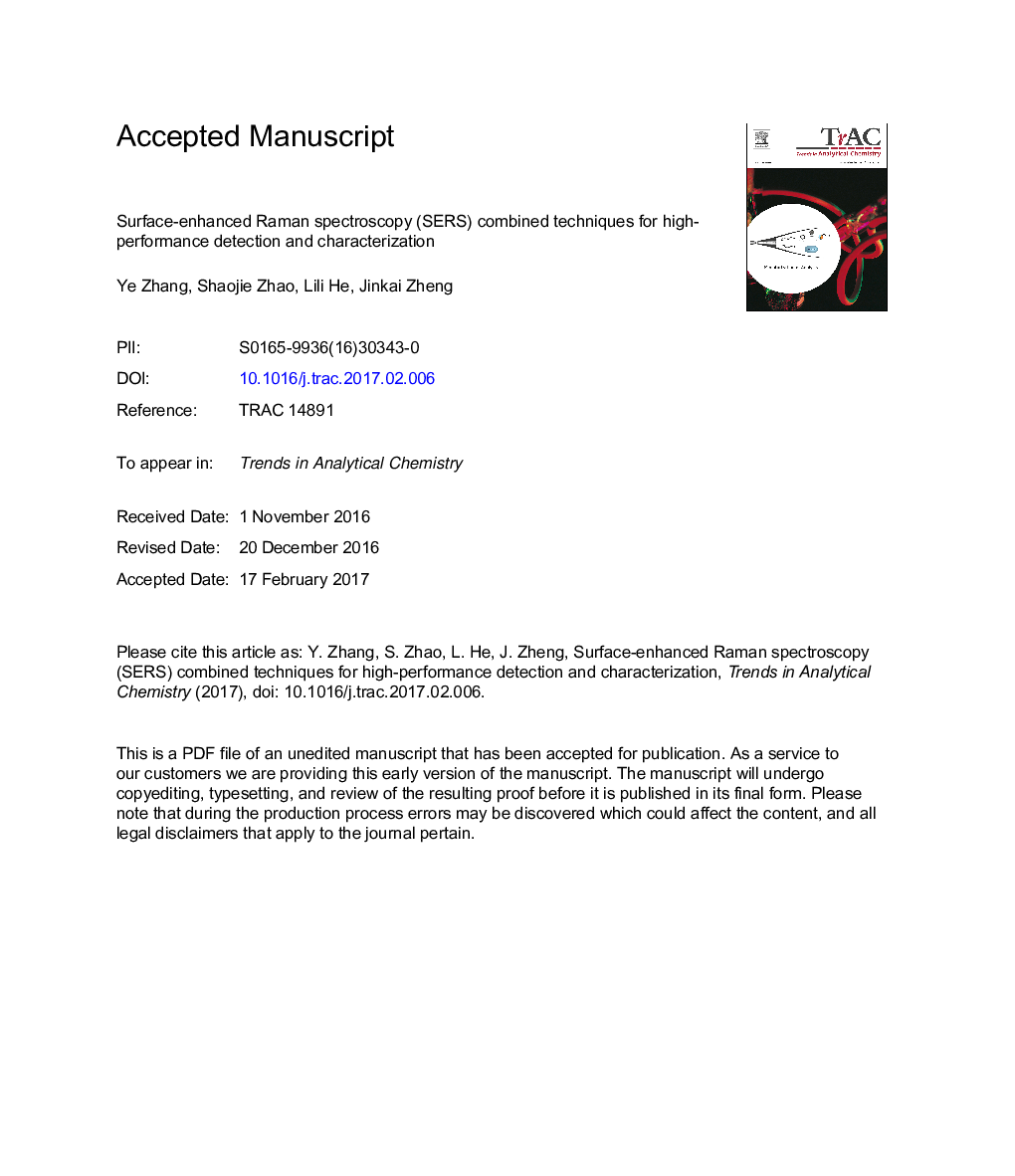| Article ID | Journal | Published Year | Pages | File Type |
|---|---|---|---|---|
| 5141613 | TrAC Trends in Analytical Chemistry | 2017 | 43 Pages |
Abstract
Surface-enhanced Raman spectroscopy (SERS) is an emerging analytical technique with high speed and sensitivity, despite some shortcomings. Combined with other techniques can overcome these limitations and enhance the capability for detection and characterization with SERS, and has been successfully in many recent studies. Various SERS combined techniques are systematically summarized in this review for the first time. SERS can be combined with diverse techniques, such as chemical separation, biological capturing, colorimetry, microfluidic devices, and labeling techniques, to enhance detection capabilities. Moreover, combinations of SERS and other chemical analytical techniques such as mass spectroscopy, nuclear magnetic resonance, Infrared spectroscopy, and X-ray photoelectron spectroscopy, can enable more precise characterization. The theories and applications of these SERS combined techniques as well as their pros and cons are compared, and further perspectives are proposed. This review provides new insights into advances in SERS combined techniques and their use in real-life studies.
Keywords
SPMESelf-assembly monolayersMIPSTLCSNPsSAMsSERSnuclear magnetic resonanceNPssingle-stranded deoxyribonucleic acidSolid phase microextractionDetectionNMRCharacterizationcombined techniqueLOD یا Limit of detectionMass spectrometrySurface-enhanced Raman spectroscopyX-ray photoelectron spectroscopyInfrared spectroscopyXPSHigh performancelimit of detectionNanoparticlespolymerase chain reactionPCRMolecular imprinted polymersSingle nucleotide polymorphismsTLC, Thin layer chromatographyhigh-performance liquid chromatographyHPLC
Related Topics
Physical Sciences and Engineering
Chemistry
Analytical Chemistry
Authors
Ye Zhang, Shaojie Zhao, Jinkai Zheng, Lili He,
